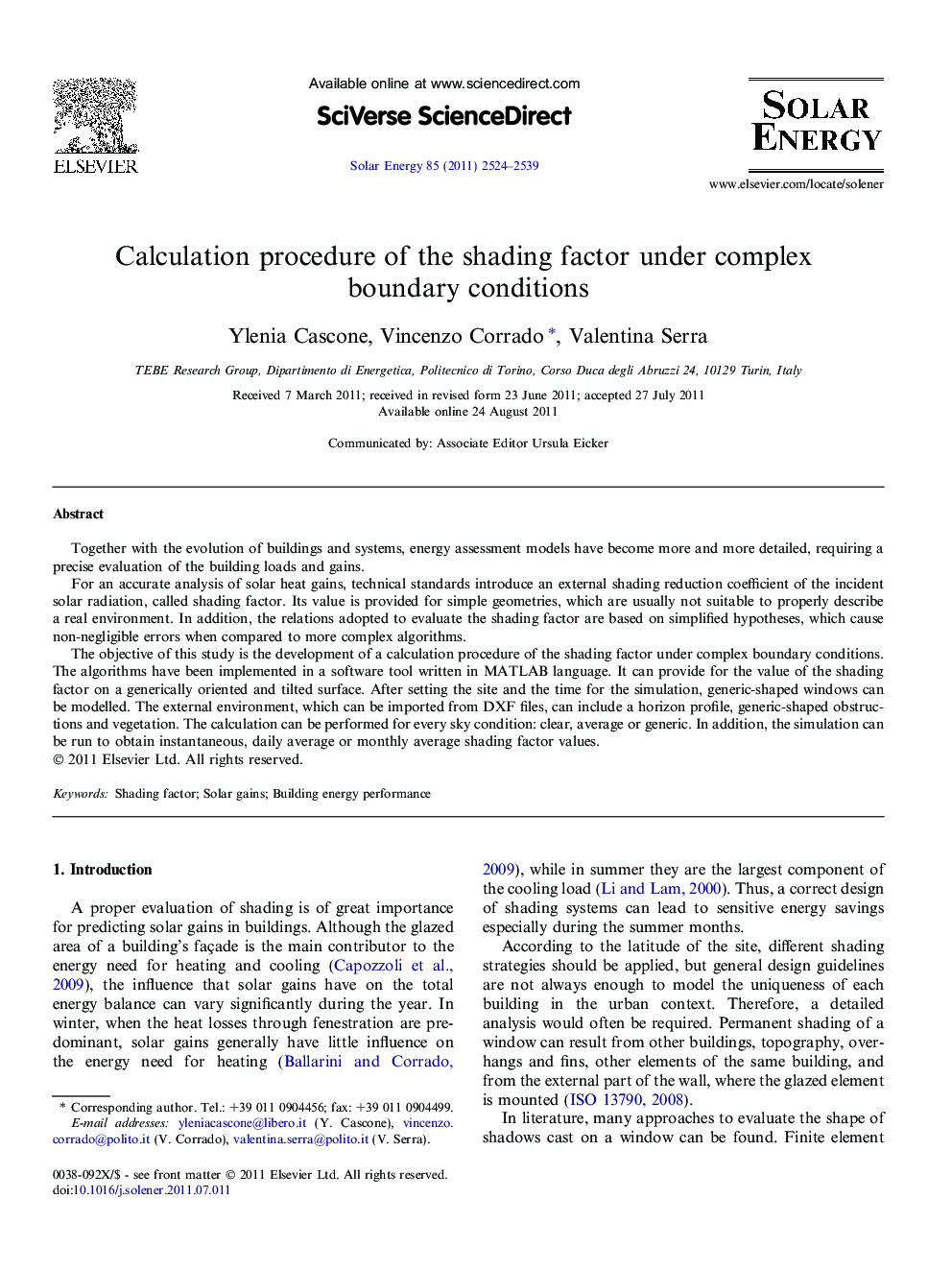| Article ID | Journal | Published Year | Pages | File Type |
|---|---|---|---|---|
| 1550871 | Solar Energy | 2011 | 16 Pages |
Together with the evolution of buildings and systems, energy assessment models have become more and more detailed, requiring a precise evaluation of the building loads and gains.For an accurate analysis of solar heat gains, technical standards introduce an external shading reduction coefficient of the incident solar radiation, called shading factor. Its value is provided for simple geometries, which are usually not suitable to properly describe a real environment. In addition, the relations adopted to evaluate the shading factor are based on simplified hypotheses, which cause non-negligible errors when compared to more complex algorithms.The objective of this study is the development of a calculation procedure of the shading factor under complex boundary conditions. The algorithms have been implemented in a software tool written in Matlab language. It can provide for the value of the shading factor on a generically oriented and tilted surface. After setting the site and the time for the simulation, generic-shaped windows can be modelled. The external environment, which can be imported from DXF files, can include a horizon profile, generic-shaped obstructions and vegetation. The calculation can be performed for every sky condition: clear, average or generic. In addition, the simulation can be run to obtain instantaneous, daily average or monthly average shading factor values.
► An accurate analysis of shading is important to predict solar gains in buildings. ► A software tool for the evaluation of the shading factor has been developed. ► The calculation can be performed for every sky condition. ► The environment can include a horizon profile, generic-shaped objects and vegetation.
